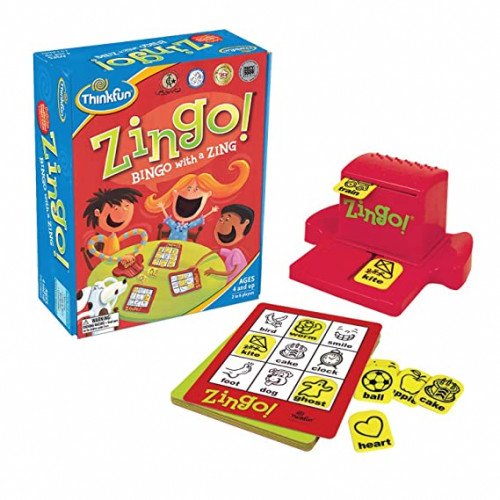BLOCKADE VS ZINGO!

BLOCKADE
Blockade (also known as Cul-de-sac) is a strategy board game for two players with the motto "beat the barrier". It's played on a board with an 11x14 grid of spaces, barriers and 2 mobile playing pieces per player. The object of the game is to maneuver ones pieces around barriers and into the opponents starting spaces. The game is long out of production. Blockade was created by Philip Slater in 1975. In United States, it was published by Lakeside under the name Blockade. In France, Germany, Sweden, and United Kingdom the game was published by Lazy Days under the name Cul-de-sac (French, translation dead-end). The rules are simple, but it provides an interesting and deep game. Each player are given 2 pawns, 9 green walls (placed vertically), and 9 blue walls (placed horizontally). Pawns are placed on their starting locations on each of the four corners of the 11×14 board. First players' starting location is at [4,4] and [8,4], and the second players' is at [4,11] and [8,11]. The object of the game is for each player to get both their pawns to the starting locations of their opponent. The first to do so wins. On each turn, a player moves one pawn one or two spaces (horizontally, vertically, or any combination of the two) and places one wall anywhere on the board (useful for blocking off their opponent's move). Walls always cover two squares and must be placed according to their color (vertically or horizontally). Pawns may jump over other pawns that are blocking their path. Once players are out of walls, they keep moving pawns until one wins.
Statistics for this Xoptio

ZINGO!
Zingo! is a game inspired by Bingo released by ThinkFun in 2002. Players try to fill their Zingo! cards with matching tiles from the Zingo! "Zinger". In the game, the dealer slides the Zinger to reveal two tiles at a time. When a player sees a tile that matches a picture on his/her board, he calls out the name of the object and places that tile on the matching space on their board. If two players have that tile, the person who calls out the name of the object first gets the tile. The first player to fill his card wins. The Zingo cards allow for more or less competitive play. The green sides have less images in common with the other 7 boards and are therefore more relaxed and less competitive. The green sides, however, have many of the same images and make for more intense games between players.